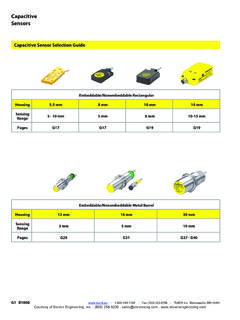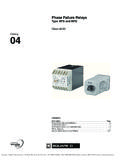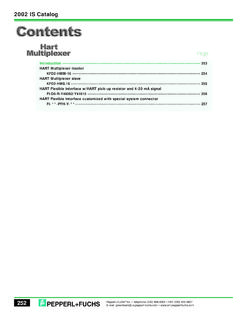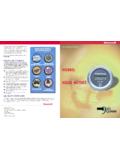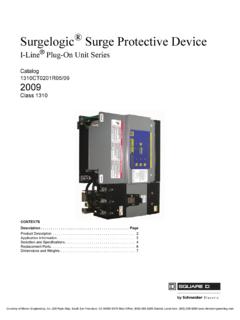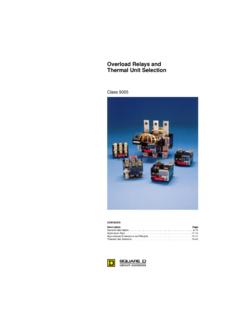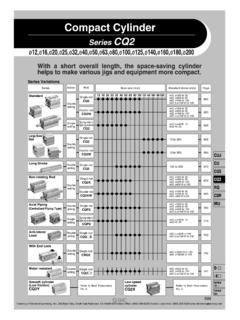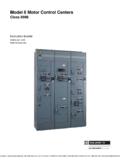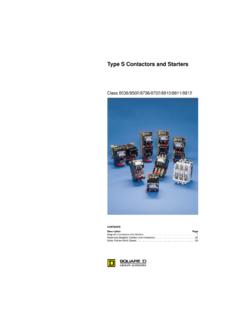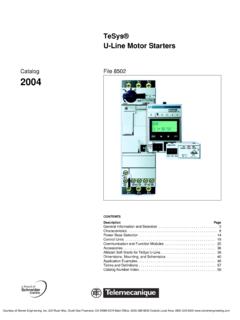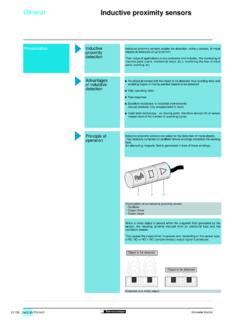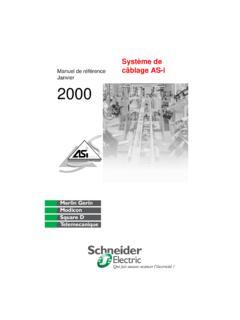Transcription of Intrinsically Safe Barrier Relays - Steven Engineering
1 Intrinsically safe Barrier Relays NY2 and 8501TO. Class/File 8501. CONTENTS. Description ..Page NY2 General Information .. 2. NY2 Ordering Information.. 3. NY2 Specifications .. 4. NY2 Approximate Dimensions and Wiring Recommendations.. 5. NY2 Wiring Diagrams .. 6. 8501TO General Information .. 7. 8501TO Ordering Information, Application Data, Approximate Dimensions.. 8. Intrisically safe Barrier Relays NY2 Relays For Hazardous Locations General Information Intrinsically safe (IS). Explosion prevention is a prime consideration in plants and facilities containing hazardous atmospheres and explosion-proof housings.
2 The main fault with the explosion-proof system is that a single human error could create a high explosion probability. Prime examples are failing to tightly replace covers on explosion-proof housings, failing to shut off the power before removing the covers, and damaging the specially machined surfaces of these covers. Intrinsically safe (IS) systems are a means of providing automated control functions in explosive environments. Because of the inherent parameters of electronic circuits, no energy is released, under normal or abnormal conditions, of sufficient magnitude to ignite a specified atmosphere mixture.
3 To design an effective Intrinsically safe system, energy that enters the hazardous area must be limited. For electronic instrumentation, this is accomplished by controlling the voltages and currents that may enter the hazardous area. In addition, stored electrical energy in field instruments is limited to levels that cannot ignite a given atmosphere. Intrinsically safe Relays , such as the NY2 and the Class 8501 Type TO Relays , act as an energy Barrier , limiting the voltage and current available in the hazardous area. They can be connected with any device having a dry contact (limit switch, magnetic switch, pushbutton, pneumatic-electric interfaces, etc.)
4 Or with NAMUR sensors. NAMUR sensors (NAMUR is a European standard) are solid state detectors specifically designed to work with such a limited amount of voltage and current. All Telemecanique NAMUR sensors comply with the strict energy limitations imposed by Intrinsically safe Relays . NOTE: Compare the sensor characteristics with related input line parameters (page 4) to determine the maximum cable length allowed when using a particular cable brand. For battery applications, a DC to AC converter (NY2 K10) is used to power up to four IS Relays .
5 This solution is safer than using DC. barriers since it offers physical isolation between hazardous and non-hazardous areas. Non-incendive switches for hazardous areas A wide variety of indexing head surface mounted and tubular proximity switches have Factory Mutual approval for installation without any immediate Barrier or control relay. Completely solid state and self-contained, these proximity switches have both AC and DC. outputs. Factory Mutual approved: Class I, Division 2, Groups A, B, C and D and are suitable for Class II, Group G hazardous locations.
6 All Telemecanique proximity switches are FM approved for this non-incendive rating. Non-incendive equipment is defined as unable to release sufficient electrical or thermal energy under normal operating conditions to cause ignition of specific hazardous materials. Non-incendive equipment can be used without additional precautions in Division II. hazardous locations where the hazardous materials can be present only in case of accidental rupture or breakdown of the enclosure containing them. Definitions Class I Locations: Are those in which flammable gases or vapors are or may be present in the air in quantities sufficient to produce explosive or ignitable mixtures.
7 Class II Locations: Are those which are hazardous due to the presence of combustible dust. Class III Locations: Are those which are hazardous due to the presence of easily ignitable fibers of flyings, but in which such fibers or flyings are not likely to be in suspension in the air in quantities to produce ignitable mixtures. Division I Locations in which hazardous concentrations in the air exist continuously, intermittently, or periodically under normal operating conditions. Division II Locations in which hazardous concentrations are handled, processed, or used but are normally within closed containers or closed systems from which they can escape only in case of accidental rupture or breakdown.
8 Group A Atmospheres containing acetylene. Group B Atmospheres containing hydrogen, or gasses or vapors of equivalent hazard, such as manufactured gas. Group C Atmospheres containing ethyl-ether vapors, ethylene, or cyclo propane. Group D Atmospheres containing gasoline, hexane, naptha, benzine, butane, alcohol, acetone, benzol, lacquer solvent vapors, or natural gas. Group E Atmospheres containing metal dust, including aluminum, magnesium, and their commercial alloys, and other metals of similarly hazardous characteristics. Group F Atmospheres containing carbon black, coal or cake dust.
9 Group G Atmospheres containing flour, starch, or grain dust. Excerpt from the National Electrical Code Equipment and associated wiring approved as Intrinsically safe shall be permitted in any hazardous (classified) location for which it is approved, and the provisions of Articles 500 through 517 shall not be considered applicable to such installation. Means shall be provided to prevent the passage of gasses and vapors. Intrinsically safe equipment and wiring shall not be capable of releasing sufficient electrical or thermal energy under normal or abnormal conditions to cause ignition of a specific hazardous atmospheric mixture in its most easily ignitable concentration.
10 Abnormal conditions shall include accidental damage to any field installed wiring, failure of electrical components, application of over- voltage, adjustment and maintenance operations, and other similar conditions. 2. 1998 Square D All Rights Reserved 1/98. Intrinsically safe Barrier Relays NY2 Relays For Hazardous Locations Ordering Information NY2 A 1 Single Channel, Dual Relay Output A single channel relay that will accept either a NAMUR proximity sensor or a dry contact switch input. Two SPDT. outut Relays are ganged to provide two NO and two NC contacts.
